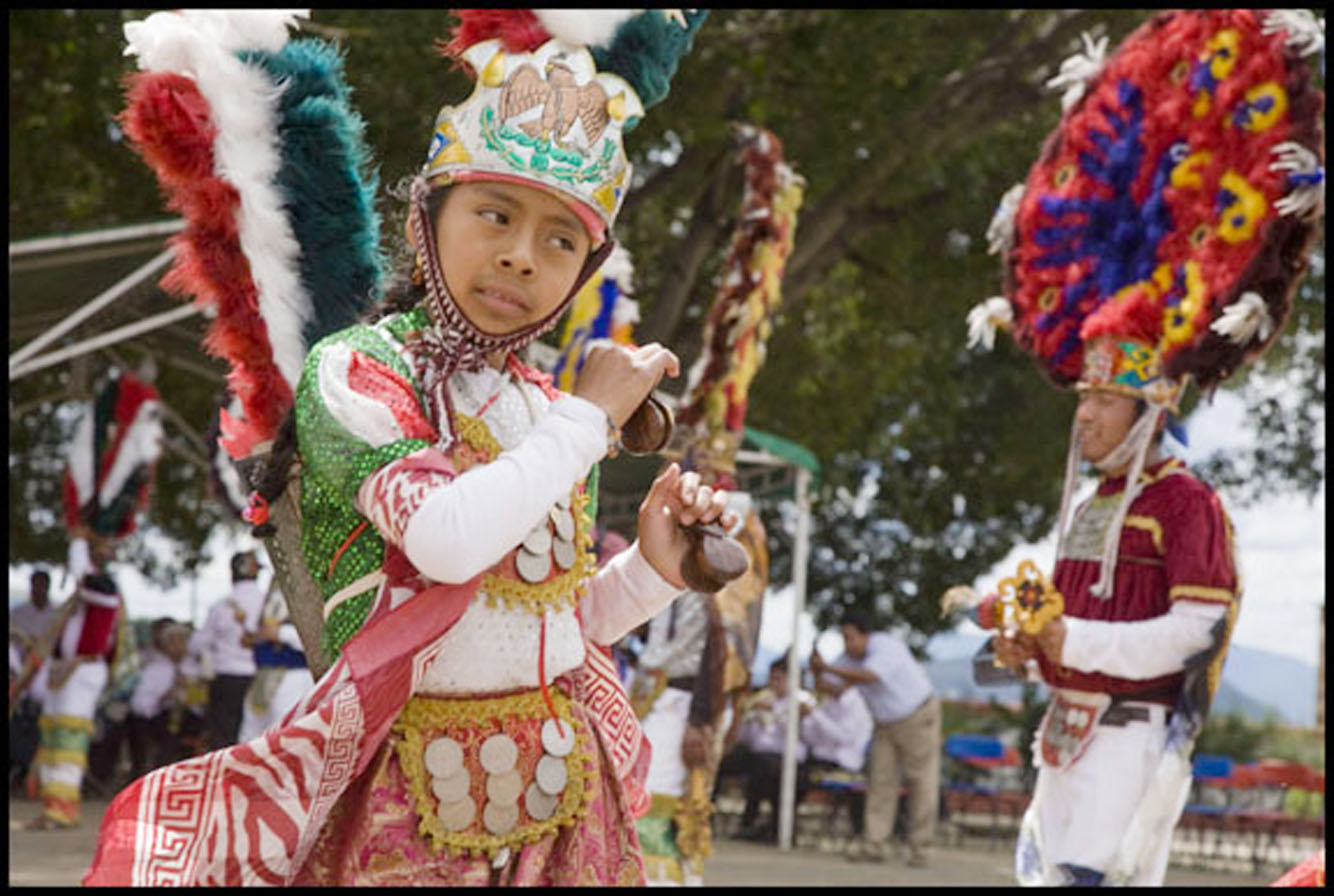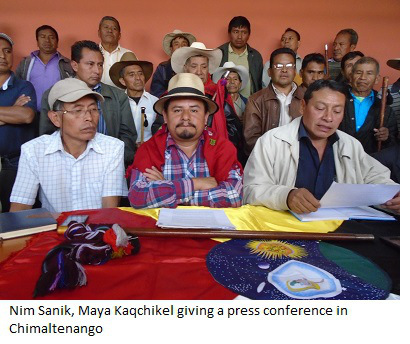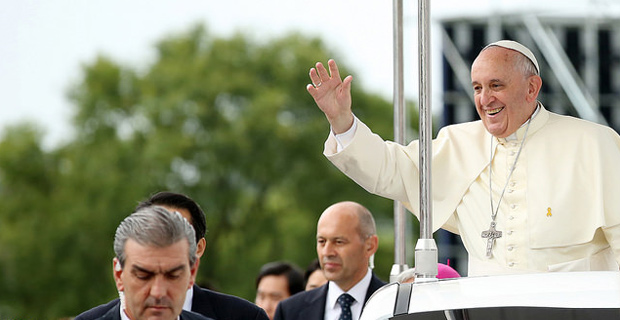by David Bacon
The Spaniards conquered the Zapotecs of the central valleys of Oaxaca, Mexico, almost 500 years ago, in an earth-shattering series of events. It changed everything in the lives of the conquered. So many died that many indigenous peoples came close to disappearing; some estimates hold that the indigenous population of the Americas was reduced by 90 percent in the two centuries following the conquest. The population drop was so great that the Spaniards later had to bring slaves to labor in their plantations on the Costa Chica (Oaxaca’s Pacific coast).
Such change and catastrophe, however, produced one of the world’s most beautiful dances: The Dance of the Feather. Today, it is performed in a number of towns in central Oaxaca, among them the weaving village of Teotitlan del Valle. In one of life’s ironies, the forced migration of the Zapotecs, driven from their homes by poverty and conquest, helped this commemorative dance survive.
The name of the city, Teotitlán, comes from Nahuatl and means “land of the gods”. Its Zapotec name is Xaguixe, which means “at the foot of the mountain”. It still retains its Zapotec culture and language. The dance is performed in the town plaza in front of the Preciosa Sangre de Cristo Church, begun in 1581 and completed in 1758. The church sits on the ruins of a Zapotec temple, which the Spanish destroyed.
The dance recalls the basic history of the conquest. At the time of the Spaniards’ arrival, indigenous people had been living in Oaxaca’s central valleys for 11,000 years. The first site of human habitation is not far from Teotitlan, in the Guilá Naquitz cave near the town of Mitla. The discovery of corncob fragments indicates that the world’s first people to cultivate corn lived there.
People speaking Zapotec in Oaxaca’s central valleys built towns with palaces, temples, ball courts and markets, coexisting and sometimes fighting with each other until 1457. That year the Aztec tlatoani, or ruler, Moctezuma invaded. First he conquered the towns inhabited by Mixtecs, then those of the Zapotecs. The Aztec invasion halted when Hernando Cortes arrived in the Yucatan, traveling up the coast of Tabasco in 1519. Cortes made alliances with the Aztecs’ enemies and marched on Tenochtitlan, their capital, massacring thousands of indigenous people at Cholula on the way.
By then, the first Moctezuma was dead. The second Moctezuma let Cortes and his soldiers into the city. Moctezuma was then taken hostage and later murdered. The city’s inhabitants rose up, forcing Cortes to flee, but they won only temporary respite. Cortes laid siege to Tenochtitlan and finally destroyed it, burying the huge temple pyramid under what is now Mexico City’s main cathedral and central plaza, the Zocalo. Moctezuma’s successor, Cuauhtemoc, was eventually captured and, with his death, the Aztec empire crumbled.
To form alliances against the Aztecs, Cortes needed a translator. First he found a priest who could speak Mayan, then a Nahuatl woman from the Gulf Coast who could translate between Mayan and Nahuatl, the language of the Aztecs and surrounding peoples. Malinalli, or Doña Marina, was one of 20 women given to the Spaniards by the residents of Tabasco. She became Cortes’ lover and advisor, and bore Cortes’ first son, Martin.
Malinalli became known as the Malinche, an object of hatred and veneration ever since. She is blamed for the defeat of the feathered warriors of Tenochtitlan and the end of purely indigenous civilization in Mexico. But she was also the mother of one of the first children borne of this enormous clash. The Oaxacan Jose Vasconcellos, secretary of education in Mexico’s first post-Revolutionary government, called the mix a new race: la raza cosmica or “the cosmic race.” He and his intellectual companions held that Mexico had people of mixed indigenous, African, and European ancestry, and was therefore moving beyond the boundaries of the old world.
While the union of Malinalli and Cortes gave birth to the mestizo, this did not free indigenous people, who were forced into conditions close to slavery. When Cortes died, Martin became Marquis of the Valley of Oaxaca. His lands included 23,000 people living in 11,500 square kilometers of territory. The Spaniards set up the encomienda system, huge land grants that included the indigenous population, forced into slavery to “pay” for room, board, and religious instruction.
Martin, so the legend goes, invented a dance to dramatize the conquest of indigenous people by the Spaniards. Jorge Hernandez Diaz, an anthropologist at the Benito Juarez Autonomous University of Oaxaca, writes that there are three theories of the origin of the dance. In one, Martin celebrated the birth of twins by staging a fight between dancers representing the conquering Spaniards (headed by Martin himself in the role of his father) and the defeated native people. The roles of the dancers in the Dance of the Feather today are still the same: Cortes, his captains and soldiers, Moctezuma and his allies. The personality of Malinalli was split into the roles of two people: Doña Marina and the Malinche.
In Teotitlan del Valle, the dance also highlights another contradiction. Fifty years ago, the town was very poor and much of the traditional weaving craft that had created part of its historical identity was no longer practiced. That poverty, reinforced by economic reforms and trade agreements that undermined Oaxaca’s agricultural economy, forced many of the town’s residents to leave. They became migrants, first within Mexico and then across the border into the United States. As remittances began arriving to support the families left behind, expatriates also provided money to buy materials for weaving. With the influx of tourists anxious to buy rugs in traditional Zapotec designs, weaving workshops were reestablished.
Migrants saved money to buy the materials for the elaborate clothing and headdresses needed for the Dance of the Feather. Some returned home to fulfill the three-year commitment required of those wanting to perform the dance.
“Why do people make the commitment?” he asks. “These commitments have a religious and spiritual importance. [Benito Mendoza Mendoza, who played Moctezuma in 1977, says:] ‘In some cases we do it because the Lord helped us overcome our food situation, when we had no money. Others do it because of their faith. And other people do it because they had a personal problem, or were sick and got better.
Therefore, to give thanks to God that they were able to move forward they made the commitment. There are many reasons why people do it.’”








